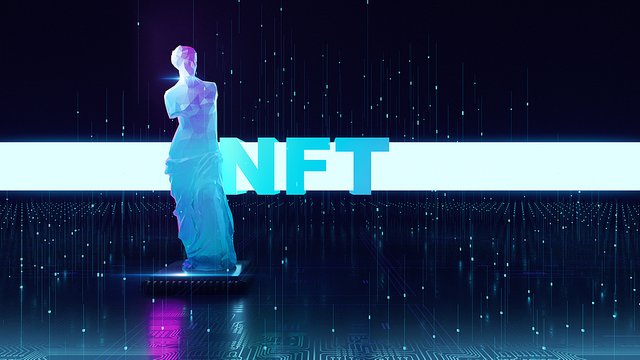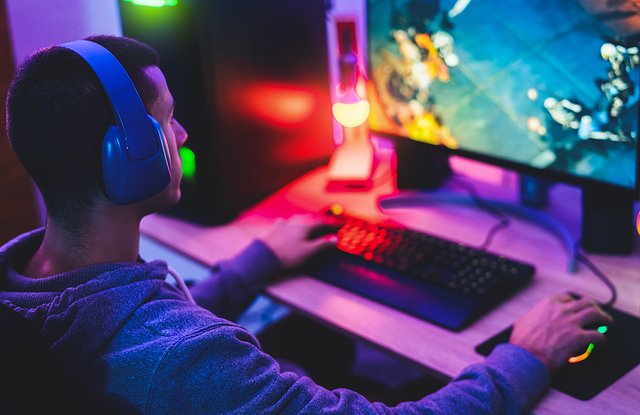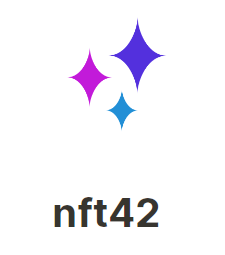NFTs: Blockchain's IP Game-Changer

For those connected to the crypto space, by now you have definitely become acquainted with non-fungible tokens ("NFTs"). What’s more remarkable, even if you have no relation to the crypto space, there is still a decent chance that you’ve heard about NFTs.
In an incredible turnaround, as little as a few months ago, many crypto natives barely knew what an NFT was and if they did, it was probably only in regard to something like CryptoKitties. In the early quarter of 2021, this space has exploded and, quite frankly, it is just getting started. Given the fact that every major news outlet covered it, you probably know that the digital artist Beeple sold an NFT recently at Christie’s for $69 million, but as we will discuss, NFTs are not just about digital art.
This analysis of NFTs assumes that you have at least the basic understanding of what an NFT is - if you do not, please take a moment to read the NFT Bible on opensea.io. Broadly, nonfungible tokens have an impressively wide set of use cases and because of that, they are attracting people from all different market sectors, including:
- Legendary investors like Mark Cuban
- The NBA
- Artists
- Musicians
- Companies involved in product authentication
- Companies involved in supply chain management
- News publications and others
The general public is realizing the potential of NFTs far faster than most realized the potential of crypto in general or even DeFi, which, until recently, was the fastest-growing sector of crypto over the last year. Defi’s popularity and utility has already resulted in some high-profile integrations with traditional financial services, an indication that Defi’s mass adoption has been faster than what bitcoin experienced by an order of magnitude.
NFTs in Practice
But what about NFTs makes them so intriguing? Simple - they promise significant disruption in so many different market sectors.
NFTs can provide musicians with the ability to engage directly with their fans and potentially cut out a good portion of the music industry’s middlemen.
Further, NFTs permit artists to better seek compensation and protect their works. In theory, NFTs enable artists to permanently profit off of the secondary sales of their art, something that has never been done in the traditional art world and is a direct result of the actual code involved in the minting process that creates NFTs.
On a similar note, we believe businesses like Ticketmaster and its associated ticket-selling colleagues will see the immediate utility of NFTs given the significant secondary market associated with ticket sales. If NFTs are used as tickets to an event it should be possible for these companies — or even the artists or sports teams themselves if they wanted to try to cut out such middlemen — to profit off the first sale of an event ticket as usual and then profit off of any subsequent sale. This scenario will likely be one of the first truly mass adopted mainstream commercial uses of NFTs that people will interact with regularly.
In a world that is increasingly fearful of deepfakes (for good reason), many individuals theorize that the cryptographic uniqueness of an NFT can be used by content creators and celebrities to indicate that the videos and images they produce and distribute are authentic and not fake, and by extension that videos lacking an authorized identifying NFT are not real. The same goes for other routinely knocked-off items like expensive handbags and designer clothing.
Additionally, there are novel financial use cases that NFTs seem to be poised to make use of or revolutionize and this firm strongly believes that NFTs will allow for the first on-chain issuance of bonds. One of our clients, Charged Particles, has developed a technology that should enable companies to do this, and much more. For more information on this topic, please check out their website.
Augmented Reality, Gaming, and Digital Worlds

The gaming industry is ripe for large-scale disruption by NFTs. An often underestimated market — the video game industry is currently far larger than the film industry. NFTs could revolutionize how games are constructed, played, and paid for.
Specifically, NFTs allow for in-game items like swords, shields, and skins to be platform agnostic i.e., freely movable from platform to platform and game to game. It is a foreign concept for some people, but skins are already a multibillion-dollar industry; NFTs would further allow customization, mobilization, and financialization of these items, not to mention the potential for a guarantee of absolute uniqueness/exclusivity, a commodity people have a long track record of paying a premium for.
NFT disruption is not limited to the appearance of in-game items. Given the cryptocurrency components of NFTs, their gaming use case will likely affect actual gameplay since users could literally pay to increase the power of an item like a sword. Game and console companies will take advantage of this new monetization stream sooner rather than later.
Then there are the Metaverses like Cryptovoxels, Decentraland, and Somnium Space. These platforms are currently somewhat fringe in terms of mainstream consumer use, but they, or platforms like them, will have the potential to dominate society in the relatively near future.
With current technology, we experience these metaverses mostly in a 2D sense (Somnium Space is VR focused), but as augmented and virtual reality become more viable it will only strengthen the case for Metaverses. Businesses are already being built in the Metaverses (literally and figuratively) and Metaverse specific commerce is happening.
It is only a matter of time before non-crypto-centric companies establish significant presences in the Metaverses. This firm is currently building a location in Cryptovoxels, and we believe we are the first law firm to do so.
If anything, the pandemic should provide an insight into the potential of this sort of virtual experience. With the rise of the Zoom call, digital art has seen its use case spike and there are platforms that allow for the displaying of digital art pieces, but it is only a matter of time before the main ones integrate this functionality and Zoom or Zoom-like calls will take place in digital representations of rooms, rooms that will have NFT backed digital art on their walls.
Eventually, this may lead to meetings held entirely in the Metaverse where digital art galleries already exist, which in turn will result in people wanting to customize their meeting rooms and their locations. This will be done with digital images (art), and because demonstrable ownership works differently in the digital world, people will use NFTs to prove the uniqueness and/ authenticity of the art they display.
This will also likely lead to the fusion of a video game concept, high fashion, and business meetings. We know gamers will pay to customize their avatars in games, (which is a big component of the skins discussion mentioned above), but as digital representations of the real world are mainstreamed and more social interactions take place in the Metaverse (or just digitally like with Zoom), it is likely that people will want to express themselves through “fashion” as they do in the real world.
Savvy traditional fashion companies will capitalize on this. The end result is that if someone in a digital meeting space or Metaverse outfits their avatar with digital clothing designed by Gucci, other users would instantaneously know whether or not the item is an actual piece authorized by Gucci because it will be tied to an NFT and be instantaneously verifiable. Fashion brands that take advantage of this will see their profit margins skyrocket!
I know this all sounds very futuristic and science fiction-esque, but it is an inevitable result of the shift to a more digital way of life — and it’s closer than you think.
Risk Analysis
As one can imagine, none of these developments come without significant risks. Given the incredible diversity of the NFT use cases, these risks are widely varied and there is no way to address all of them in this article. Instead, we will focus on some of the more obvious risks (at least to a lawyer) and strongly recommend that if you are innovating in the NFT space you consult an attorney who has experience with NFTs, finance and securities law, and intellectual property matters.
Let’s start with an easy one, one that I think pretty much everyone can wrap their mind around. Many NFTs are minted on platforms that don’t securely link the nonfungible token to the underlying asset. For this example, we’ll consider digital art.
If the art piece is platform-centric or if the image represented by the NFT is not stored at a secure location, a buyer could spend a large amount of money on such an NFT and the platform could go out of business or be required to “take down” the art due to copyright infringement claims. The result of either is that the image would be “unlinked” from the NFT. Now you have an angry purchaser who has nothing but an expensive cryptographic token which would almost certainly result in a claim against the platform and/or the artist.
Some platforms provide a superior linking mechanism where the image data is stored on the InterPlanetary File Storage System ("IPFS"), which is a decentralized data storage platform. This results in a less censorable NFT but it is still possible for the link between the data file (the image in this example) and the token to be severed whether intentionally or unintentionally, once again resulting in a basically valueless token and an angry purchaser.

From a platform standpoint, however, it adds different risks in that images stored on a chain in this way are immutable and can never be modified or taken down.
Working on an immutable chain raises concerns regarding trademark and copyright infringement because, unlike a centralized system, platforms can’t respond to a take-down notice and so the question becomes who is responsible for infringement? Is it the artist-who, by the way, could be completely anonymous-or the platform? These are questions of first impression and I’m sure we will see legal proceedings on them soon given how quickly this space is evolving.
The other, darker issue, and one that is associated with the decentralized web in general, involves illegal content. Specifically, things like child pornography, where in theory images or videos of child pornography could never be taken down.
There is also the potential for on-chain immutability to become an avenue for exploitative revenge porn, where graphic images of people are placed on-chain without consent and can never be taken down. These are very real issues that, to my knowledge, the industry has not figured out a way to address yet, but it is imperative that we do because this sort of malevolent use will do nothing but cause pain for the victims and hurt the industry as a whole.
Moving to the financial use case, projects making use of NFTs for financialized products need to be aware of a lot of the same rules that apply to money services businesses and to banks, specifically AML/KYC concerns and potential securities issues.¹
One use case that we have seen adopted recently has been the fractionalization of high dollar value NFTs or groups of NFTs through the use of ERC20 tokens. The result of this tokenization is basically a digital art investment fund and we have been saying since the first such implementation that these are clearly securities.
The SEC agrees with us on this, as Hester Pierce confirmed recently, but any common-sense analysis would highlight this reality. Accordingly, individuals engaged in the tokenization of NFTs need to be aware of the relevant securities laws. For further information on this, please contact the firm and we can attempt to help you mitigate these concerns.
I’d like to take a moment to pause here and remind readers that this firm is a huge proponent of the industry and while we do sound negative when we raise issues like this, it is our job to think about these things and our intention in highlighting them is to ultimately make the industry stronger and more viable.
Intellectual Property Considerations

The last set of risks addressed in this article are IP risks. NFTs seem to represent, in the short to medium term, a shift in the intellectual property world where the traditional path to monetization could be significantly modified, if not completely overturned.
Inevitably, this shift will give rise to hotly litigated issues. The long and the short of it is, people are minting NFTs of images, videos, songs, and the likenesses of famous people that they do not have the rights to. Couple that with the previously mentioned potential immutability of NFTs and the damages for such minting could be huge. From a litigation strategy perspective, it is a certainty that aggrieved parties will include platforms in their suits at least initially, so care needs to be taken to ensure that trademarked and copyrighted material is not placed on a chain that can’t be amended and that platforms consider these risks well before they find themselves in court.
Musicians have been quite bullish in this space, perhaps most famously is the EDM artist 3LAU who tokenized some of his music and sold it for over $11 million recently. While this is amazing, 3LAU is a crypto-native and has spent an inordinate amount of time in the space understanding its ins and outs, and very clearly and carefully planned this release in a way that didn’t violate any of his previously existing contractual obligations.
We urge musicians to speak with their representation or to contact this firm to discuss whether or not they actually have the ability to tokenize a song under their existing record contracts because the specific type of rights behind this release method have not been established. The obvious result will be that the unprepared and inherently highly fragmented music industry will collectively attempt to assert rights to NFTs under any/all existent music rights types that they can. That said the NFT distribution model will probably impact mechanical and synchronization rights more than anything else.
On the plus side, for musicians who want to take advantage of this new distribution model, the novelty of this space may actually provide them with increased bargaining power in regards to their labels and this might be a time to either a) renegotiate their record deal, or b) at least secure favorable terms for the NFT-related distribution model and the NFT-related rights because record labels are taking note of this boom, are incredibly interested in monetizing the space, and do not want to be late to the party.
We have been advising artists to try and take advantage of the surge in NFT popularity and to position themselves as a gateway to the NFT space for their labels. In other words, to utilize the allure of a novel revenue stream in the form of NFTs to secure better terms across the board.
Overall though, the biggest takeaway here for musicians is to be very careful when tokenizing existing songs without gaining permission from their label.
There are clearly a lot of big issues to look out for when it comes to NFTs and IP, but the other side of this coin is that an NFT-based ecosystem could drastically improve artists’ lives. For example, a blockchain-based system could be set up where NFTs are used to verify and identify works of art and news articles, while automation is employed to scour the web for instances of said photo, painting, or article, and alert the creator when the item is being used without permission (this is actively being worked on by several projects).
This method would potentially sidestep the traditional route of proving infringement and lead to better monetization for creators. There is a lot of talk about the creator economy these days and NFTs will be the rocket fuel and the currency for said economy.
NFTs are incredibly exciting for both crypto-natives and for people who have not traditionally participated in the crypto economy and they will have a massive impact on society. That said there are many legal issues surrounding creating, using, and selling them and there are very few lawyers who are experienced in this space.
We strongly recommend that if you have an interest in participating in any capacity that you contact the firm and allow us to help you navigate this wild new world.
- The Financial Action Task Force (“FATF”) has released additional draft guidance related to the blockchain/crypto space, and if enacted as written, all NFTs (not just finance related NFTs) will be defined as virtual assets, which means that they are monetary in nature and are subject to AML/KYC procedures and currently no project in the space is equipped to deal with this. We strongly urge people how are passionate about NFTs and the industry as a whole (or even those opposed to regulatory overreach in general) to make their displeasure about this known. Contact your representatives, contact your local government, if you know people who are work in the financial regulatory system let them know, bombard FATF with emails and letters. These rules will likely have an incredibly chilling effect on the industry and every possible step should be taken to avoid this classification.
Author: Dave Rodman
The information in this blog post (the “Blog” or “Post”) is provided as news and/or commentary for general informational purposes only. The information herein does not, and shall never, constitute legal advice and therefore cannot be relied upon as a legal opinion. Nothing in this Blog constitutes attorney communication and is not privileged information. Nothing in the Post or on this website creates any kind of attorney-client relationship or privilege of any kind.
Originally published at https://therodmanlawgroup.com on March 31, 2021.